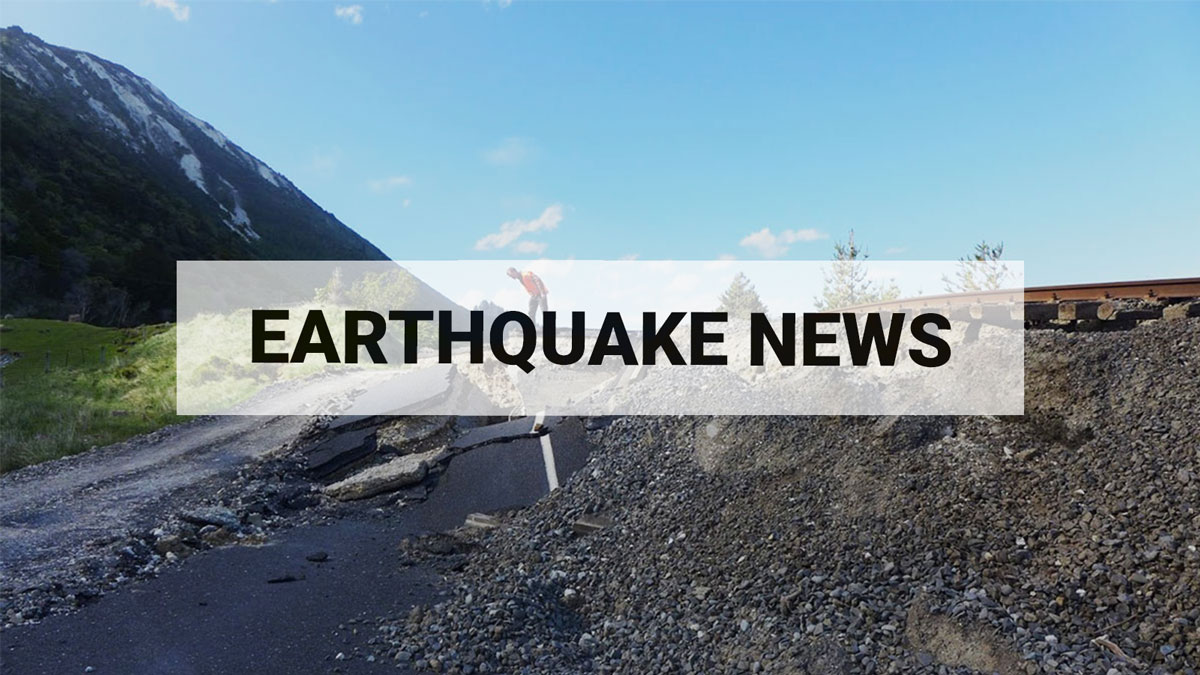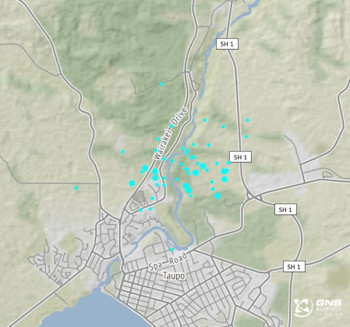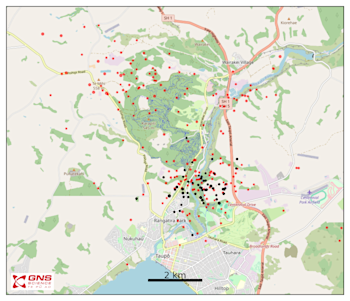
Taupō earthquake swarm
Since 6pm Thursday 30 January we have located over 50 earthquakes in the geothermal area just to the north of Taupō. We look at what exactly swarms of earthquakes are and what causes them.
We know the shaking has been disconcerting for folks in the area. Our teams continue to monitor the activity, and the most likely scenario is for the swarm activity to continue decreasing over the next few days.
The maximum magnitude of the events has been ~M2.8 and most of these quakes have been reported by GeoNet as ‘unnoticeable’ or 'weak’ shaking. This “shaking” description is calculated by an automated system and is based on the earthquake parameters and converted to the Modified Mercalli Intensity Scale. This does not account for how shallow the earthquakes are or how close people live to them – some of our team living in Taupō have been feeling them too! Most of the earthquakes have around 300 people reporting that they felt the shaking, with one, a M2.8, having over 1000 felt reports
What are swarms?
While they may sound scary, swarms are just a collection of quakes about the same size, happening in a localised area, usually over a short time period (hours to days to weeks). Swarms usually don’t have a mainshock or larger quake that starts off a sequence.
Earthquake swarms are quite common and happen in all regions of Aotearoa New Zealand and throughout the world but especially within the Taupō Volcanic Zone (TVZ), the area from Ruapehu up through Whakaari/White Island.
Swarms can be generated when fluids (e.g., water) migrate and interact with pre-existing faults. In volcanic environments such as the TVZ, these fluids can be released from deeper magma or circulating within active geothermal areas. Fluids tend to follow existing fractures and faults, acting as a lubricant that reduces the clamping force on the faults - sometimes to the point where it allows it to slip and cause earthquakes.
Are these earthquakes related to the Taupō volcano?
Due to the presence of numerous local and regional faults and geothermal systems, the Taupō area often experiences earthquakes that are not related to changes in activity from the volcano. At times, some earthquakes can be related to expected changes in background volcanic activity related to unrest. However, most of such episodes of unrest do not lead to eruptions, and the volcano goes back to background activity after a few months, as was last the case in 2022-2023. Although Taupō is a volcano capable of large “super eruptions”, the majority of eruptions in the past have been of small to moderate size. These recent earthquakes are most likely related to the geothermal system whether naturally or influenced by geothermal power generation.
We can’t prevent natural hazards, but we can, and should, be prepared for them
Drop, Cover, and Hold during a large earthquake. If it is Long or Strong, Get Gone! People near the lake front should move to higher ground as soon as it is safe to do so, especially if they hear loud noises or see unusual lake action during earthquake activity. During volcanic activity, follow official advice provided by your local Civil Defence Emergency Management Group.
More information about Civil Defence in the Taupō District can be found here.
For information on preparing for earthquakes or responding to volcanic activity, there are guidelines from the National Emergency Management Agency's (NEMA) Get Ready website.
Prepare your home. Protect your whānau. There’s a lot we can do to make our homes safer and stronger for earthquakes. Natural Hazards Commission Toka Tū Ake's website has key steps to get you started.




